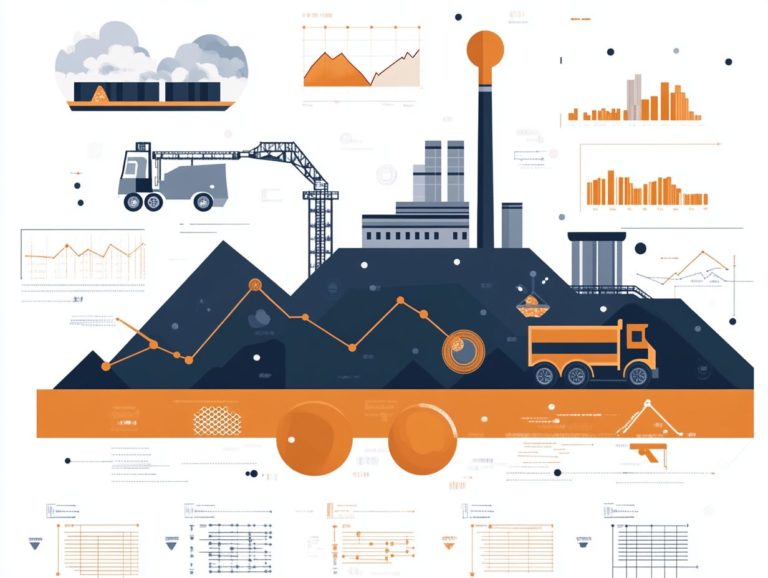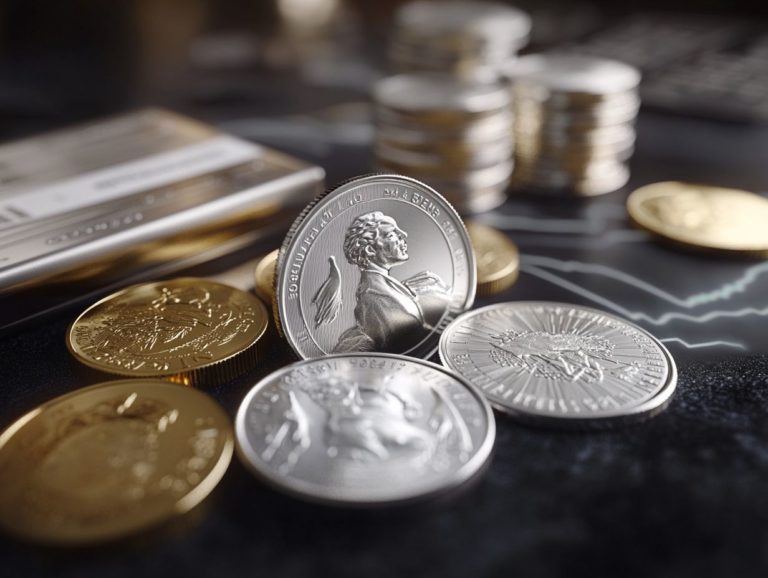What Drives the Silver Investment Market?
The silver investment market has captured the interest of both seasoned investors and those just starting out.
With its intriguing mix of industrial demand, economic influences, and geopolitical factors, silver offers a compelling opportunity for diversification and potential returns. However, like any investment, it carries its own risks and challenges.
Let s explore the exciting dynamics of the silver market together!
Contents
Key Takeaways:
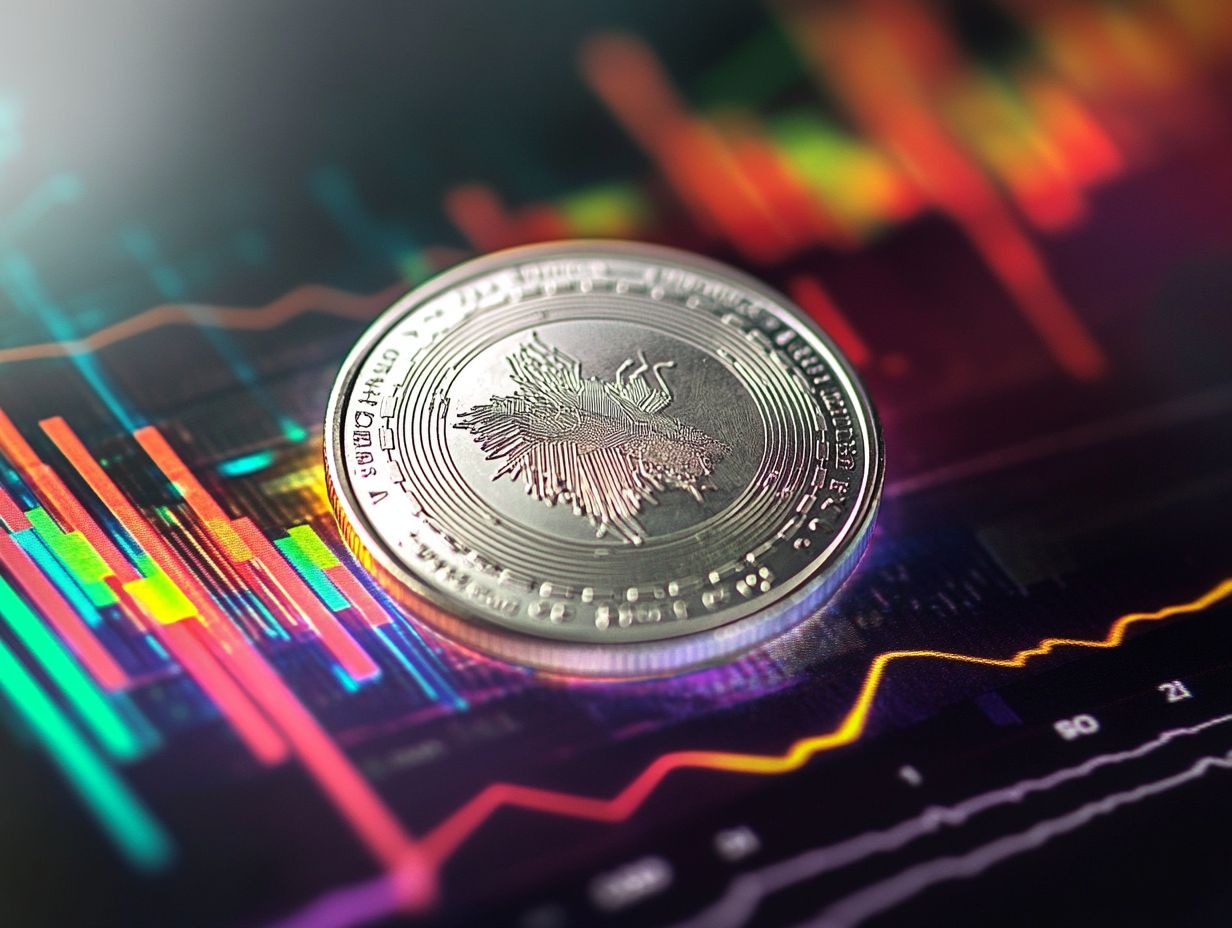
- The silver market is shaped by economic, political factors, and industrial demand.
- Investing in silver can diversify your portfolio and hedge against inflation.
- Be aware of market fluctuations and storage concerns; strategies can help maximize returns.
Understanding the Silver Investment Market
The silver investment market has experienced remarkable growth over the years, influenced by many different factors such as economic trends, evolving demand, and shifts in supply dynamics. In times of economic uncertainty and inflation, precious metals like silver have garnered increasing appeal among investors.
Companies like First Majestic Silver, under the leadership of Keith Neumeyer, have been instrumental in shaping the market, affecting both investor behavior and overall market conditions. Understanding these elements is essential for anyone seeking to navigate this intricate landscape of financial assets.
Overview of the Market and its Growth
The silver market has witnessed impressive growth, with prices fluctuating in response to a variety of demand factors and economic conditions.
In recent years, the surge in renewable energies and electric vehicles has significantly impacted silver’s demand, as this precious metal is essential for devices that convert sunlight into electricity (photovoltaic cells) and other technological applications. Valued historically for its aesthetic allure and industrial utility, silver has often reflected broader economic trends, demonstrating remarkable resilience during challenging financial periods.
As supply chains face challenges and mining output struggles to keep up with rising consumption, the market dynamics continue to evolve. Financial markets respond quickly to shifts in supply and demand, which in turn influences investor sentiment and price volatility.
Factors Influencing the Silver Market
Several interconnected factors shape the silver market, including economic trends, government policies, inflation rates, and geopolitical events. Each of these elements plays a crucial role in influencing the delicate balance of supply and demand dynamics, ultimately impacting your investment decisions and market strategies.
Economic and Political Factors
Economic and political factors wield considerable influence over silver prices, with inflation and government policies playing pivotal roles in shaping market expectations.
As inflation rises, your purchasing power diminishes, nudging you toward tangible assets like silver as a safeguard against devaluation. Concurrently, fluctuating interest rates can either entice or deter investment in precious metals, especially when real yields are low or even negative.
Geopolitical events ranging from trade tensions to conflicts and regulatory shifts introduce additional layers of volatility, impacting market sentiment.
When uncertainty hangs in the air, silver’s allure often intensifies, leading to increased demand and rising prices. Therefore, grasping these interconnected indicators is crucial for anyone seeking to navigate the dynamic landscape of the silver market.
Industrial Demand and Supply
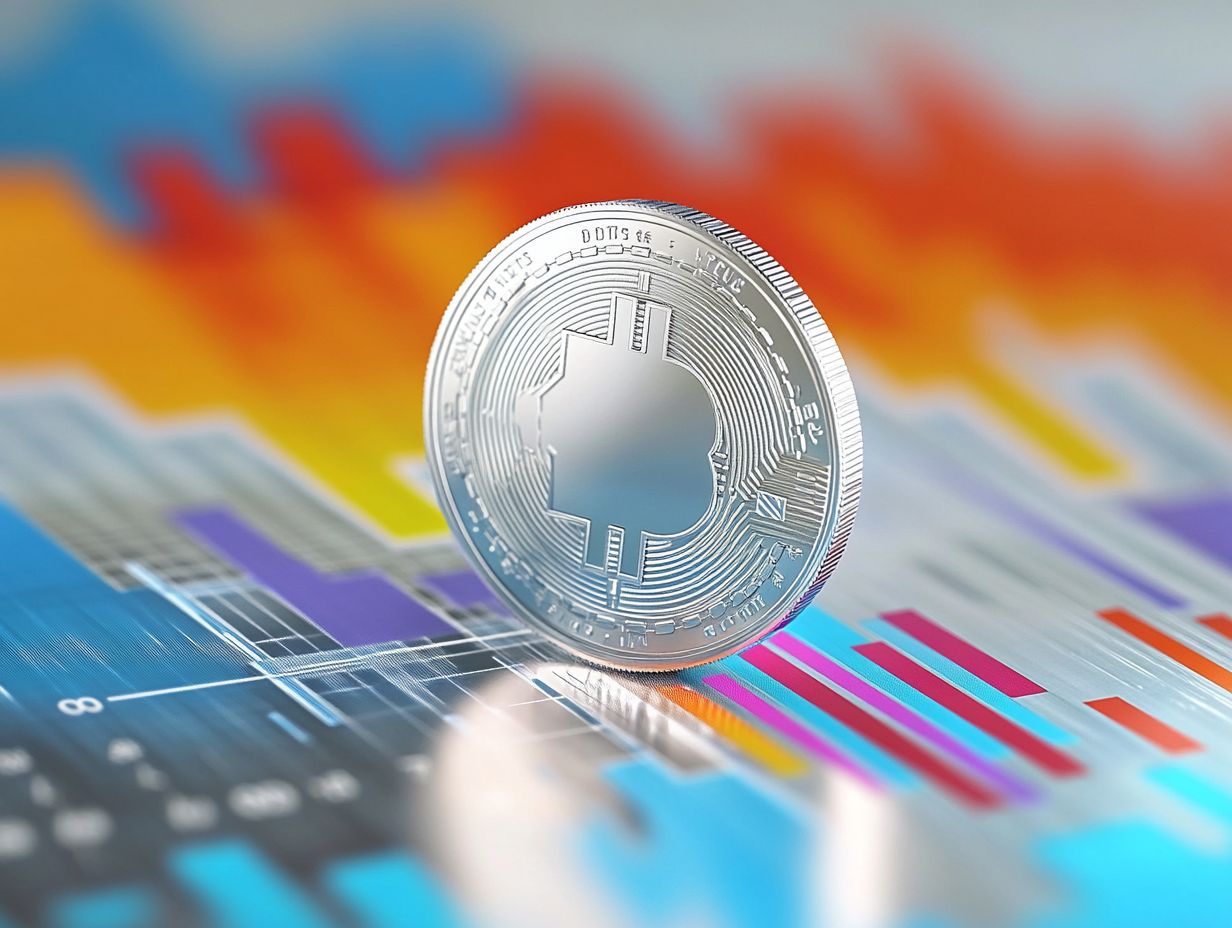
The industrial demand for silver is driven by advancements in technology and applications in sectors like solar panels and photography. This demand plays a crucial role in shaping the supply and demand balance.
Breakthroughs in industries such as electronics and medical technology increasingly depend on silver s ability to conduct electricity and its antibacterial properties. As green technologies and renewable energy solutions gain traction, the appetite for silver may surge, as it becomes a critical component in producing efficient photovoltaic cells.
Market trends indicate a notable shift in investment strategies. More investors now recognize silver not merely as a precious metal but as an essential resource in a rapidly evolving technological landscape. For those looking to deepen their knowledge, exploring 5 must-read books about silver investing is vital for forecasting future silver investments.
Benefits of Investing in Silver
Investing in silver offers a multitude of advantages. It diversifies your financial portfolio, serves as a reliable hedge against inflation, and holds the potential for significant returns, especially during times of market volatility.
Diversification and Inflation Hedge
Silver serves as a powerful tool for diversification and is a robust hedge against inflation. It provides much-needed stability in your financial portfolio amidst inevitable market fluctuations.
Incorporating silver into your investment strategies can help mitigate the risks associated with economic upheavals and the shifting landscape of market dynamics. As inflation steadily erodes the purchasing power of traditional currencies, precious metals like silver maintain their intrinsic value. For those keen on preserving wealth, learning more through 5 must-watch documentaries about silver investing can be beneficial.
Savvy investors recognize that a well-rounded portfolio requires a blend of asset classes. Silver s unique attributes as a tangible asset enhance diversification and offer a reliable safe haven during uncertain times. Thus, adding silver to your investments allows you to navigate the complexities of financial markets with greater confidence and resilience.
Potential for High Returns
The potential for high returns on silver investments makes it an enticing option for investors looking to capitalize on market trends and historical value.
Historically, silver has shown remarkable resilience during economic downturns, earning its reputation as a safe-haven asset, similar to gold. With global uncertainties on the rise, now is the perfect time to consider silver investments as a strategic hedge against inflation and currency devaluation. Additionally, understanding the 5 key players in the gold market can provide valuable insights for your investment strategy.
Increasing demand from industries like electronics and renewable energy, combined with supply chain constraints, could significantly sway the market price. Considering the cyclical nature of commodities and the growing emphasis on sustainability, silver’s historical performance suggests it may offer substantial returns in the foreseeable future.
Risks and Challenges in Silver Investing
While investing in silver offers many advantages, it also carries its own set of inherent risks and challenges. Market volatility and price fluctuations are critical factors to consider, as they can significantly influence your investment decisions.
Volatility and Market Fluctuations
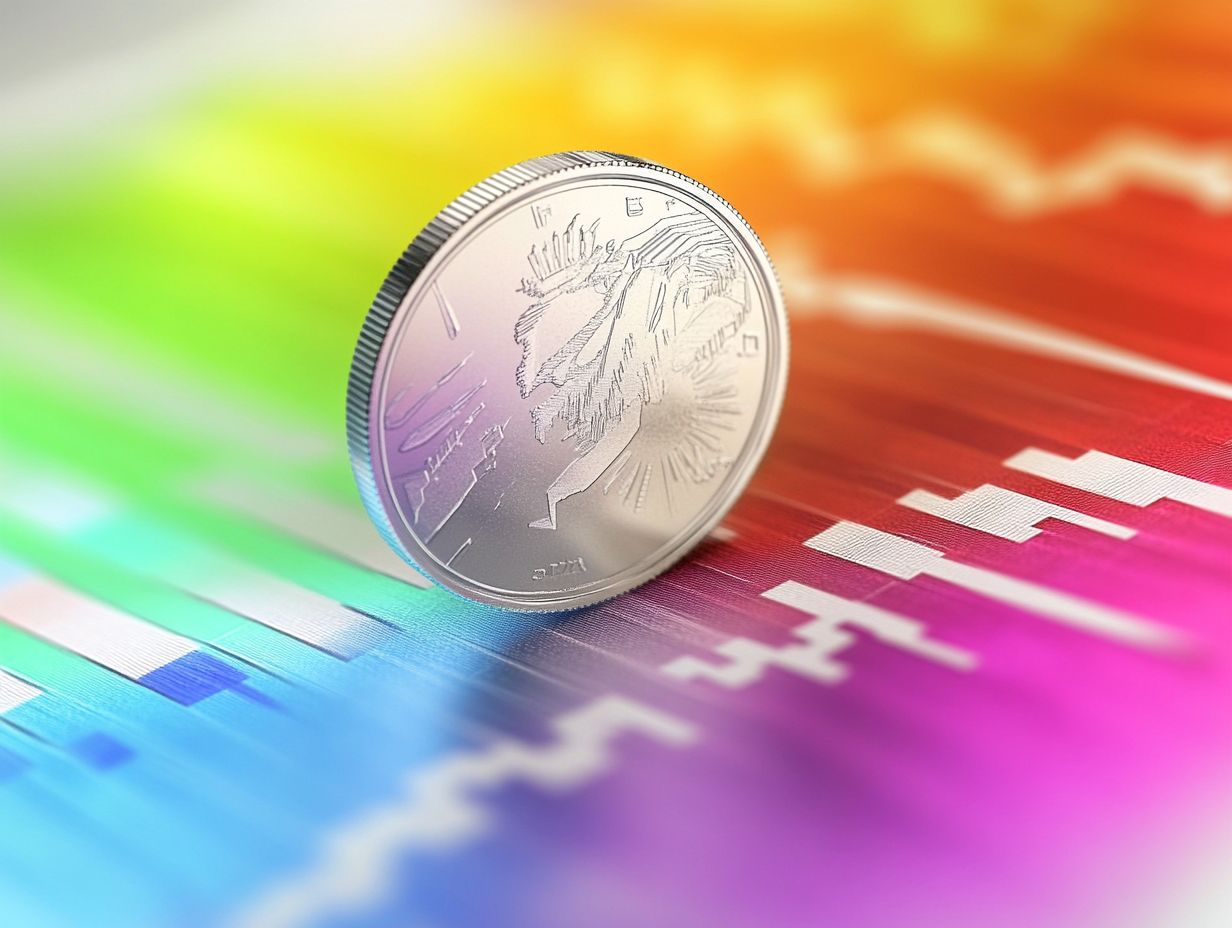
Market volatility and price fluctuations are commonplace in the silver market. These present both risks and opportunities for you as an investor.
Understanding the reasons behind these changes is crucial for making informed investment decisions. Factors such as global conflicts, shifts in industrial demand, and variations in monetary policy contribute to the market’s unpredictable nature.
For instance, during the onset of the global pandemic, a surge in safe-haven buying led to a spike in silver prices. This showcases silver’s role as both an industrial metal and an investment asset.
However, recent interest rate hikes have dampened enthusiasm, causing prices to retract. You must remain vigilant, as these dynamics create an environment where strategic positioning can yield substantial rewards or lead to losses.
Storage and Security Concerns
Storage and security concerns are paramount for you as an investor looking to include silver in your portfolio.
Where you store your silver matters. It affects both your asset’s safety and your overall costs.
You might contemplate options such as home safes or bank safety deposit boxes. Each presents its own set of benefits and challenges.
Storing silver at home offers you immediate access, but it raises issues related to theft and insurance.
Conversely, opting for a bank’s safety deposit box can enhance security. However, be aware of the annual fees that could inflate your overall investment cost.
Consider climate control to protect against tarnishing. Being aware of these factors enables you to make informed decisions that mitigate risks while maximizing your potential for returns.
Tips for Investing in Silver
To successfully invest in silver, adopt effective strategies that maximize your returns and guide you in selecting the right investment vehicles.
Strategies for Maximizing Returns
Get ready to ramp up your silver investments with savvy strategies that maximize your returns! Keeping a close eye on market trends and demand factors is key.
One approach you might find particularly beneficial is dollar-cost averaging, which means investing the same amount regularly, regardless of price swings.
This strategy not only helps mitigate risk but also fosters a disciplined investment habit. Diversifying your holdings across various silver assets such as bullion coins, ETFs, and mining stocks can further enhance your potential for gains.
By understanding the unique characteristics and market behaviors of each asset type, you enable yourself to make informed decisions. This ultimately allows you to optimize your silver portfolio and adapt to the ever-changing economic landscape.
Choosing the Right Investment Vehicles
Choosing the right investment vehicles for silver whether it s coins, bars, or ETFs is essential for optimizing your investment outcomes.
Understanding the nuances of these options can significantly enhance your portfolio diversification and risk management strategies.
For example, silver coins not only possess intrinsic value but also attract collectors, elevating your overall investment appeal.
On the other hand, silver bars might suit you better if you’re seeking lower premiums per ounce, catering to bulk investors focused on commodity prices.
If you prefer a more hands-off approach, exchange-traded funds (ETFs) let you gain exposure to silver without the hassle of physical storage.
Ultimately, selecting the right vehicle depends on your financial objectives, risk tolerance, and the broader market trends that sway silver’s value.
Frequently Asked Questions
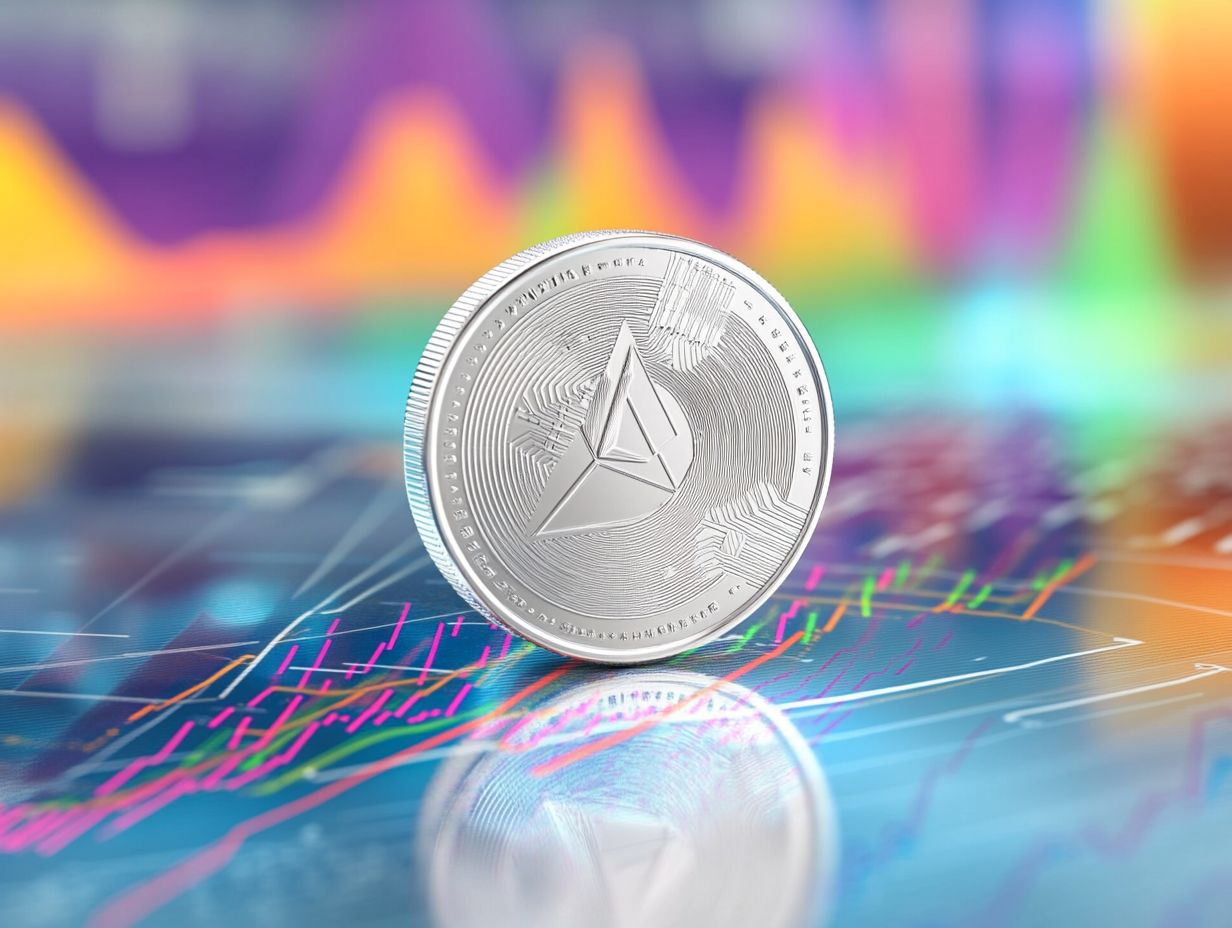
What drives the silver investment market?
The silver investment market is influenced by several key factors. These include supply and demand, global economic conditions, and investor sentiment.
How does supply and demand affect the silver investment market?
High demand usually drives up silver prices, making it an appealing investment choice. Conversely, an oversupply can push prices down, discouraging investors.
What role do global economic conditions play?
Global economic factors like inflation and interest rates significantly impact silver investments. High inflation often leads investors to choose silver as a safeguard against currency depreciation.
Is the market affected by geopolitical events?
Definitely! Events like trade wars and political instability can create market uncertainty. This often drives investors to seek silver as a safe haven during turbulent times.
What is investor sentiment?
Investor sentiment captures how investors feel about a particular asset. Positive feelings can boost demand and raise prices, while negative feelings can do the opposite.
Are there other driving factors?
Yes! Technological advancements and government policies also shape the silver market. For example, growing use of silver in renewable energy can significantly increase demand and prices.










